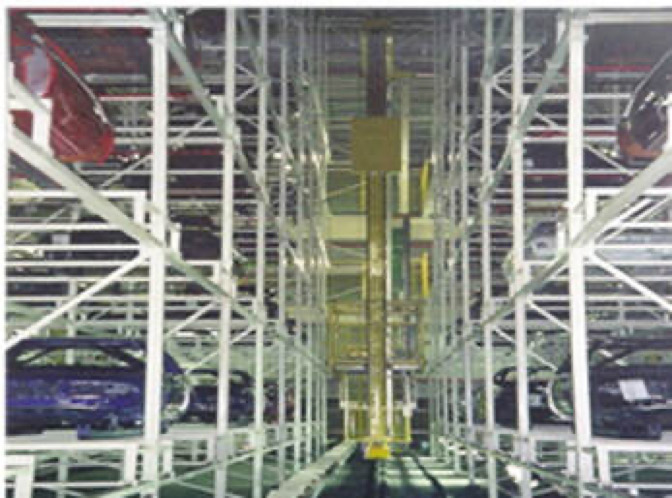Pantograph lift
This is like an ordinary scissor table but, instead of being fixed to the floor, it is suspended from an upper structure. This permits the load to be moved vertically to be free underneath.
It is used for height changes when the load is required to be suspended and/or when it is necessary to set free the lower part of the load.
Skillet, skid or variable height skid platforms
Any type of platform skid or any other load-carrying element for handling loads, can be studied, designed and manufactured in many different ways.
We have a special skid design with a lifting system that simplifies and reduces costs in production lines where lifting is required, such as welding or inspection lines.
Scrap conveyors
It’s a type of heavy conveyor with double strand chain and high load capacity. It comes equipped with metal buckets arranged in a way that they allow the transport of scrap or any type of bulk material coming from evacuation lines, stamping cuttings or solid waste.
They allow to perform vertical curves on the conveyor frame itself in order to lift the load. Its great advantage is that it doesn’t need to mount a large number of different conveyors on the same line and thus simplify the conveyor line.
Automated storage systems
Within this category we can provide a wide range of products to meet any storage and management need.
Our engineering in Automatic Storage Systems is not only design, but also: Preliminary studies, production flow analysis, structure design, lay-out, handling systems, procurement and contractor follow-up, development and implementation of management software.
The efficiency of an Automated Storage System depends both in the quality of the hardware and software to be used, and in its ability to adjust to the specific customer’s needs.
We can supply integrated systems to meet the requirements of many industrial sectors: from the automotive industry to food processing, from airport cargo to pharmaceutical plants.
Skids check station
This station is formed of a roller table with centering clamps and lifting movement, so the skid can be fixed in a reference point in space in X, Y and Z coordinates
Once the skid is positioned, a series of measuring photocells check that the skid is dimensionally correct in comparison with a skid pattern.
After this measurement, the skid can continue down the working line if it has passed the tests, or it can be diverted to a repair line if it is defective.































